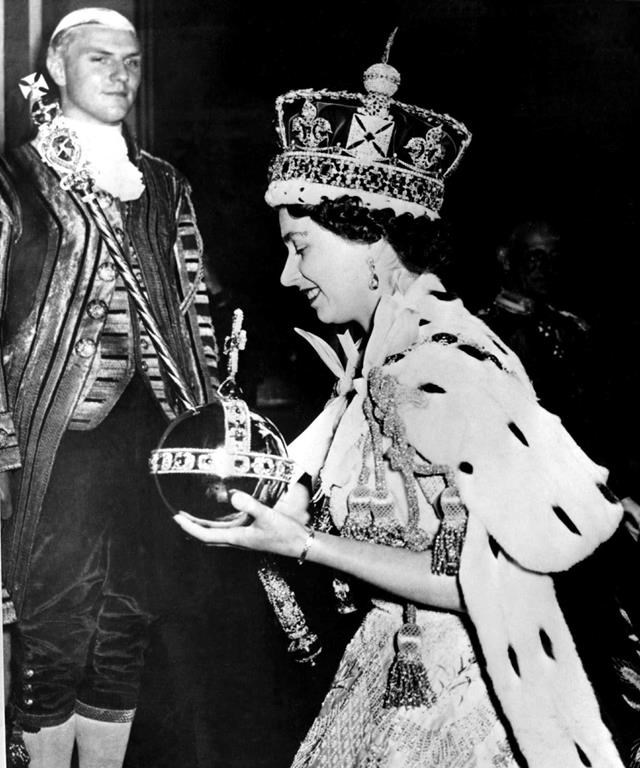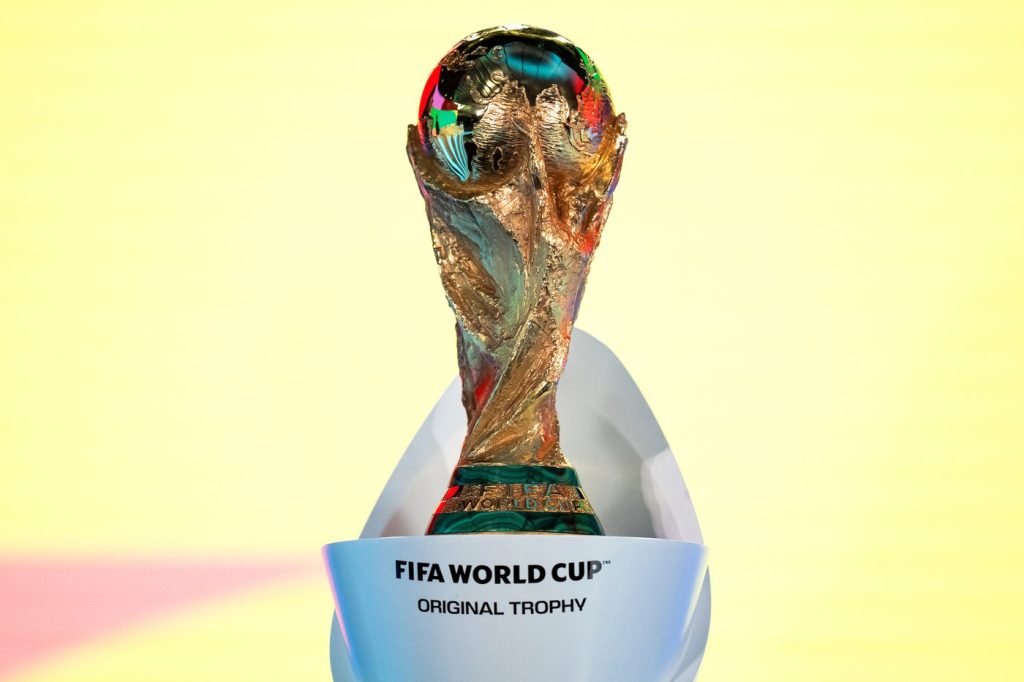Royal watchers preparing for a shorter, smaller coronation than one 70 years ago

Posted Apr 30, 2023 04:00:00 AM.
Last Updated Apr 30, 2023 04:10:22 AM.
Jamie Hill was four years old when his family walked over to a neighbour’s home in Kitchener, Ont., to watch Queen Elizabeth II’s coronation in 1953.
The now 73-year-old doesn’t remember much from the ceremony that would become a social and cultural phenomenon, but a constant reminder of the day hangs in his home in St. Agatha, Ont.
Hill’s grandmother attended the coronation in person and bought a piece of tapestry that was created for the event. She later passed it down to Hill.
The lifetime member of the Monarchist League of Canada recently added a commemorative coronation mug for King Charles III — bought during a recent trip to Scotland — to his memorabilia collection.
Hill plans to sip coffee out of it on May 6 while the world watches the formal crowning of the King.
“We’re having a few people over and we’ll have scones, clotted cream and strawberry jam,” Hill said in a phone interview from his home.
When it comes to the day of, Hill is most looking forward to taking in the pomp and pageantry.
“They do it so well with their parades and occasions. The way they put it all together is extraordinary,” he said.
The day is sure to be a lavish affair, even if details released so far suggest the King’s coronation will be more muted than his mother’s 70 years ago.
Queen Elizabeth’s coronation took place on June 2, 1953. The three-hour service was the first coronation to be televised in full and has been credited with leading to a surge in television sales at the time. It was also one of the first major world events to be broadcast internationally.
“It was the moment where the monarchy suddenly became personal because you could see the Royal Family in your home,” said Justin Vovk, a royal commentator and PhD candidate at McMaster University in Hamilton.
He said her coronation also launched a new era for members of the Royal Family, who saw the deferential distance preserved for centuries erode in the face of greater media access to their personal lives and spaces.
More than 8,000 guests watched as Queen Elizabeth took the throne. People who camped outside got glimpses of the queen as the procession weaved along a 7.2 kilometre route that took the 16,000 participants two hours to complete.
While the country was still going through a period of strict austerity in the aftermath of the Second World War, the mentality from organizers was to make the event as big and as grand as possible, said Vovk.
Jean Hess was 12 years old when she and some of her relatives slept on the ground outside Buckingham Palace the night before the queen’s coronation.
“There wasn’t a single spot left on the pavement,” Hess, now 82, recalled in a phone interview from her home in Victoria.
As the queen made her way to a balcony at the palace, Hess remembers “being crushed, pushed and shoved” as the crowd came together to catch a glimpse of the new monarch.
The King’s coronation guestlist is significantly pared down, with about 2,000 invited. The procession will also be shortened to about a quarter of the length of the queen’s.
Carolyn Harris, a royal commentator based in Toronto, said there was a strong emphasis on British aristocracy coming together for the queen’s ceremony. That appears to be less of a focus this time around, she added.
“We’re seeing a smaller guest list, but there’s efforts to make this guest list as diverse as possible while reflecting the various causes that are important to King Charles,” she said.
Prime Minister Justin Trudeau is expected to attend the event, just as then prime minister Louis St. Laurent did in 1953. Members of St. Laurent’s cabinet and opposition leaders were also part of the Canadian delegation, but it’s believed there was no First Nations representation during the event.
The relationship between the Crown and First Nations peoples predates the creation of Canada, but Harris said there was no emphasis on including Indigenous groups in 1953.
“That doesn’t seem to have been the explicit focus at that time that it is today on ensuring the various Commonwealth realms make sure to send Indigenous representatives,” said Harris.
More details about the formal Canadian delegation are expected later this week.
Die-hard royal watchers are still expected to camp out for Saturday’s ceremony, while others will be relying on their screens in all forms.
In another nod to modern technology, Buckingham Palace released a special crown emoji fashioned off the St Edward’s crown for coronation celebrations.
More than 6,000 military personnel will take part in the King’s coronation, including hundreds of troops from Commonwealth countries.
Such troops numbered in the tens of thousands in 1953 and included hundreds of Canadian soldiers.
George Bowman was one of 26 reserve airmen chosen to take part.
“When the orders came, we marched and marched and marched,” the now 91-year-old said from his home near the Bruce Peninsula in southern Ontario. “It was quite an honour to be chosen and sent over there.”
Bowman and his group were paraded behind Buckingham Palace but he didn’t get too close to the queen, he said.
The ceremony itself is likely to remain the same as it was seven decades ago.
Vovk expects some things may be cut down such as liturgical elements to reflect the monarchy’s understanding of social developments around the world.
“At a time when Britain is experiencing a financial crisis, there’s a war in Europe, there’s great uncertainty. There are all of these sensitivities that they have to be aware of,” he said.
Hess is optimistic King Charles’ reign will usher the monarchy into a new period, and while she won’t be front and centre to witness the crowning this time, she’s happy to take it in at home.
“I will have my Union Jack (flag) out on my balcony, and I will be wearing red, white and blue,” she said.
This report by The Canadian Press was first published April 30, 2023.
Brittany Hobson, The Canadian Press








